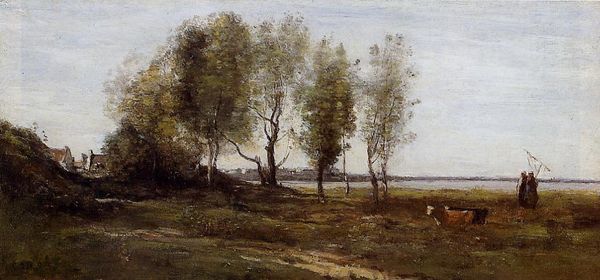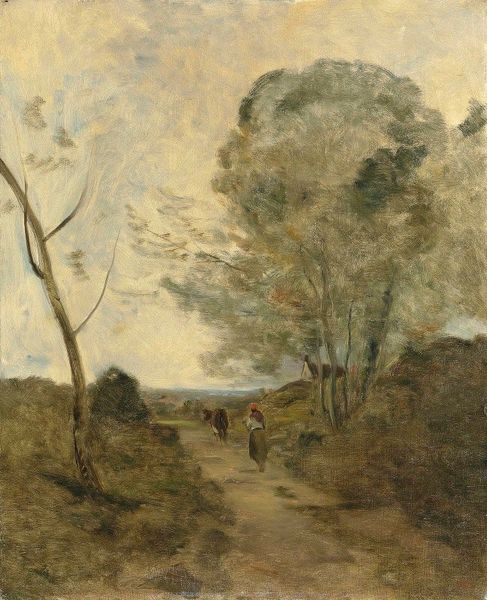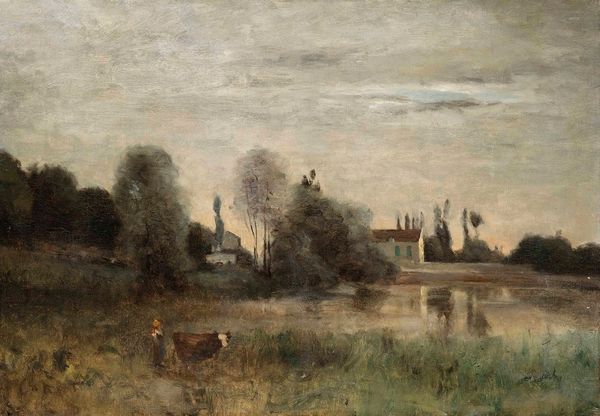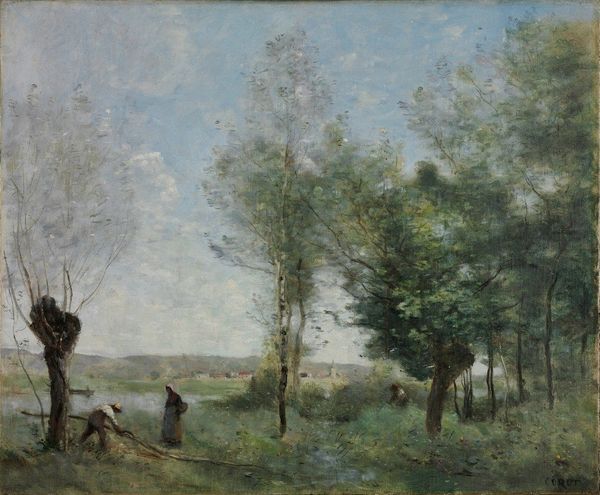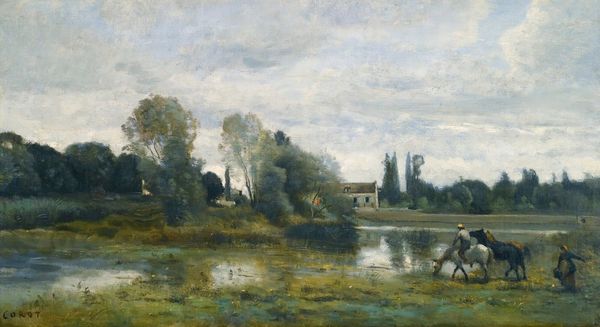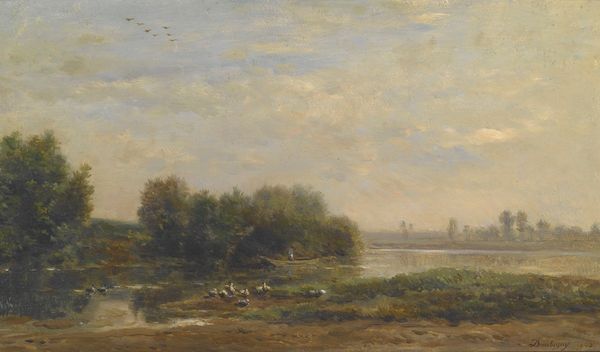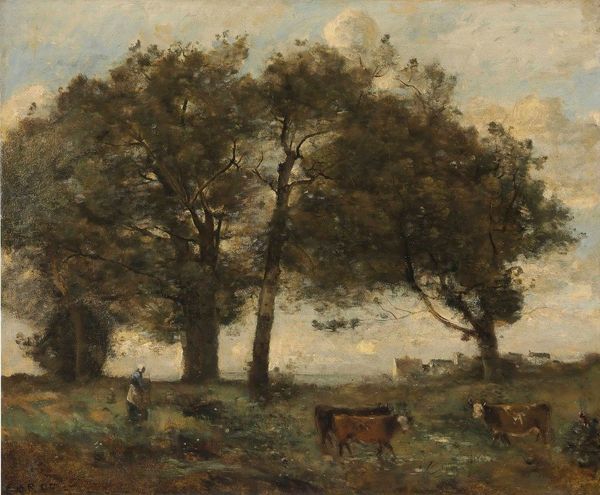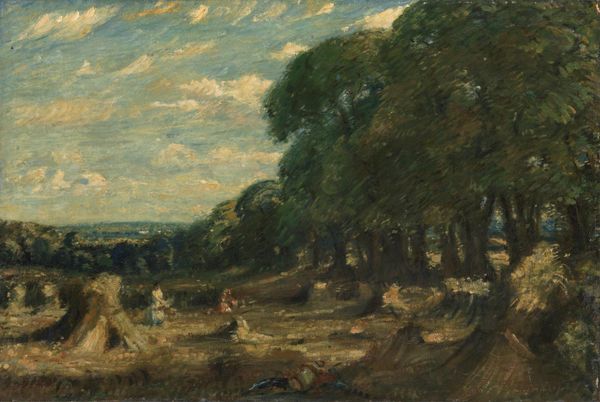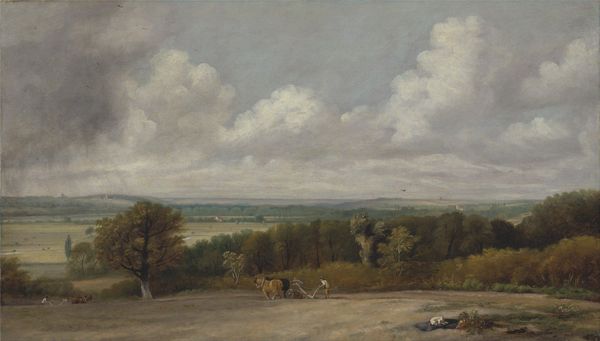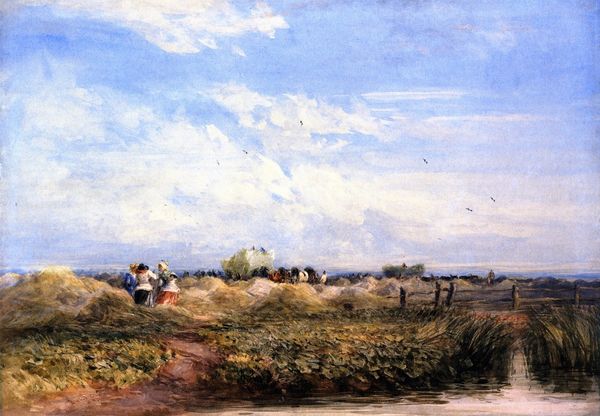
Copyright: Public domain
Editor: So, we’re looking at "The Dusty Road" by James Charles, an oil painting from 1902. It’s quite evocative; I feel this tranquility looking at the landscape. How do you interpret this work? Curator: Seeing this painting through a historical lens, I'm drawn to its portrayal of rural life and the working class at the turn of the century. What statements might the artist be trying to convey with this piece? Editor: Hmmm... maybe it’s depicting the simple life, with sheep herding being the primary way of life, that feels unaffected by industrialisation? What do you make of that choice in style and subject in 1902? Curator: The artist’s conscious decision to capture the natural landscape could be interpreted as a deliberate resistance to the industrialization of the world and the changing landscape, glorifying a rapidly disappearing way of life. Notice the muted colour palette and broken brushstrokes. Does that offer insight for you? Editor: Yes, it really does. They seem to harken back to earlier impressionistic ideas of en plein air, depicting outdoor light! What can that detail possibly tell us, historically? Curator: The hazy atmospheric conditions blur distinctions, and in some ways idealise the landscape and shepherd life through soft focus and loose details, subtly suggesting a constructed image. Think about who was viewing and collecting paintings like this during the Edwardian period; an imagined pastoral lifestyle would’ve been considered picturesque to wealthier middle-class patrons. Editor: So, it's presenting an idyllic fantasy for a very specific audience. I see it now, that simple moment is much more complicated than it seemed at first glance! Curator: Precisely. Art is rarely created in a vacuum; thinking about its social and historical context truly changes our understanding of "The Dusty Road." Editor: This painting certainly challenges you to look beyond the surface and question the narratives we might project onto images of pastoral scenes! Thanks for providing that crucial contextual lens!
Comments
No comments
Be the first to comment and join the conversation on the ultimate creative platform.


